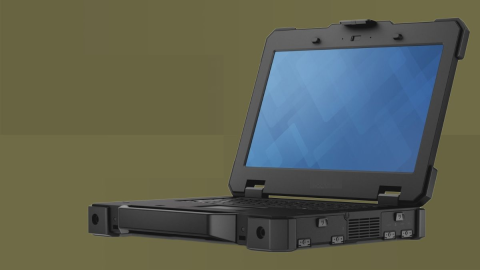NB-IoT Antenna Design and Layout for Your PCB

With all the possible wireless communication protocols available for use in a mobile device, it can be difficult to keep them straight. Narrowband IoT (NB-IoT) and LTE-M are two low-bandwidth protocols that provide remote monitoring capabilities over several miles of distance. While the data rates are quite low in both protocols, these protocols are excellent choices for lightweight embedded systems, such as small sensor arrays, industrial or vehicle monitoring. Devices that use these protocols can even be deployed underground or in buildings.
The newest release of NB-IoT is now compatible with 5G networks and provides an extremely cost-effective way to deploy embedded IoT solutions. Data plans are already available in North America from major carriers, and there are COTS components available for quickly building out new products. If your goal is to design a custom, integrated system without COTS components, you can use your PCB design tools for NB-IoT antenna design directly on your board or as an external module.
NB-IoT Capabilities
LTE-M and NB-IoT are two newer IoT-centric LPWAN protocols for a variety of applications. Some examples include home monitoring, remote sensing, smart manufacturing, and related applications. NB-IoT is an ideal choice for lightweight embedded applications that do not require huge data rates. The NB-IoT data rate peaks around 250 kbps, which is a factor 20 lower than that used in 4G LTE. The bandwidth is quite narrow (thus the term “narrowband” in the name), and the uplink/downlink bands use HD-FDD in a single antenna.
The table below shows just a few of the North American NB-IoT bands. Take a look at this whitepaper for a complete list of NB-IoT bands.
A single NB-IoT antenna design can span multiple bands, which can create some challenges in impedance matching. First, let’s look into how you can bring an NB-IoT antenna into your board, and then we’ll address the impedance matching issue.
Using a COTS NB-IoT Antenna Module
There are COTS antenna modules available for new NB-IoT devices. These modules can mount directly to your board as surface-mount components, and these smaller antenna modules are low cost, have nearly isotropic radiation distribution, and tend to be small in size (e.g., ~1 sq. in.). They also tend to have reasonable antenna efficiency for being such low-cost devices.
COTS NB-IoT antennas need to be matched to your feedline impedance (50 Ohms). This means you’ll need to manually design a matching network to accommodate the uplink and downlink bands in a single antenna simultaneously. These antennas are normally tested with an evaluation board that includes a matching circuit, and they tend to have approximately -5 dB to -10 dB of return loss if properly mounted and terminated. Ceramic SMT antenna modules are also available, which can provide lower antenna return loss in different portions of the relevant frequency bands.
A decent antenna manufacturer will provide schematic symbols, as well as 2D and 3D component models, allowing you to bring these components into your design software. During layout, you shouldn’t need anything beyond the standard design rules to place one of these antenna modules in your board. While antennas don’t need a return path per se, the antenna module may need a ground plane that spans beneath the antenna, depending on its construction. Your feedline will need to be matched to your driver/transceiver impedance, which requires properly sizing the feedline above the ground plane. Your manufacturer should provide this information in their datasheets.

Custom NB-IoT Antenna Design and Layout
You can effectively create your NB-IoT antenna design with whatever geometry you like. Whether you are using a COTS antenna module or designing a printed antenna directly on your board, you’ll need to implement some isolation techniques. This is quite important as these antennas tend to be highly isotropic radiators, creating the potential for coupling into other areas of your board. At the low frequencies involved in these systems, you may not need more than to place via fences around the feedline and around the edge of the antenna as long as there is sufficient distance between the radiator and your other circuit blocks.
If this is insufficient, you should shield other important circuit blocks in your board using via fences. This is particularly important when you have a large number of components clustered near the antenna. The other important step for preventing radiation from being picked up by other circuit blocks is to design unisolated traces with low inductance while maintaining the required impedance. Take a look at this article for some ideas on how to optimize transmission line cross-section dimensions.
The best impedance matching choice for these antennas is Wideband LC matching networks. Although the bandwidths for the uplink and downlink bands are narrow, the two bands have wide separation with total bandwidth reaching up to 20% (see bands B4 and B66 above). If you are only working in a single band, you are effectively designing a dual band matching network for the uplink and downlink portions. This involves placing capacitors and inductors as series and shunt elements. If the matching in each band is broad enough, you can bring reflection loss below -10 dB throughout a significant portion of the uplink and downlink bands.

Other External NB-IoT Antennas and Modules
The other option for bringing an NB-IoT antenna into your board is to use an antenna module that connects with a standard connector. This may be a coaxial SMA connector or other standard connector that is matched to a planar board. If you decide to go this route, pay attention to the S-parameters for your connector as it can create additional reflection and insertion losses within your frequency bands. It is a good idea to measure the S-parameters of whatever connector you want to use to check that it will be compatible throughout the uplink and downlink bands.

The circuit design and PCB layout tools in Altium Designer® are ideal for designing custom add-on modules or printed antennas for your next IoT device. NB-IoT antenna design is much easier with the help of Altium Designer’s circuit analysis and post-layout simulation tools. Altium Designer also includes an integrated set of tools for managing components and preparing deliverables for your manufacturer.
Now you can download a free trial of Altium Designer and learn more about the industry’s best layout, simulation, and production planning tools. Talk to an Altium expert today to learn more.









